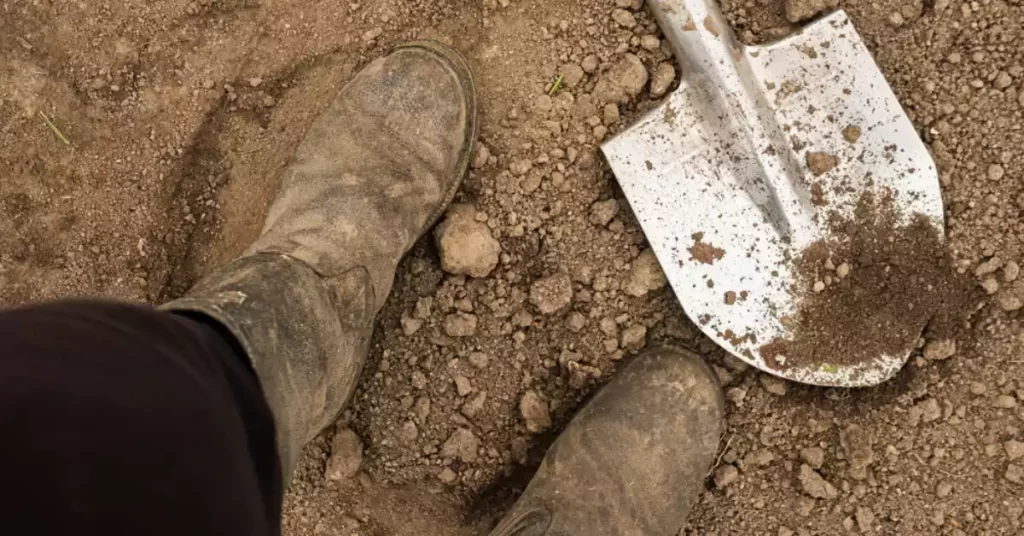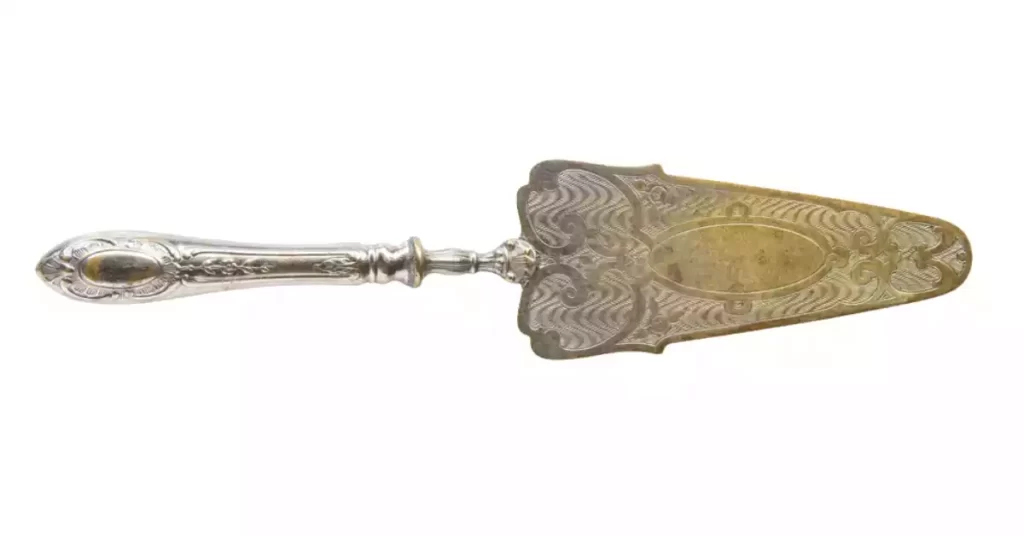From prehistoric times to the modern era, shovels have been our reliable companions in survival and progress. Among a myriad of tools mankind has developed, antique shovels carry a unique charm, transporting us to past eras with their distinct features and craftsmanship.
Identifying and dating antique shovels is a captivating journey. This process involves careful examination of specific attributes such as material, maker’s mark, and patina, which reveals the estimated age and possible origin of these tools.
Antique shovels serve as a direct link to our history, silently narrating stories of human ingenuity and development. Their value extends beyond their basic utility, making them sought-after collectibles and interesting study subjects.
History of Shovels
Early Days: The Origins of Shovels
The shovel is an artifact that dates back to prehistoric times, believed to have been one of the first tools human beings ever crafted. These primitive shovels were created from animal bones or shells and were used to dig and scoop.
Evolution of Shovels Through the Ages
Over the centuries, shovels have evolved significantly, adopting new designs and materials. Wooden shovels gave way to iron, steel, and aluminum versions. Their shapes and sizes also varied, reflecting the specific tasks they were designed to perform.

Antique Shovel Identification
Recognizing Unique Features of Antique Shovels
Every antique shovel carries distinct features that can be used for identification. These features include the shape of the blade, type of handle, and the way they are joined.
Material Matters: Identifying Metals and Woods
An essential step in antique shovel identification is discerning the materials used. The presence of rust suggests iron or steel, while a shiny, non-corrosive surface indicates the use of aluminum or an alloy. Similarly, identifying the type of wood used in the handle can provide clues about the shovel’s age and origin.
Makers Marks: Key to Shovel Identification
Many antique shovels bear maker’s marks, often found on the blade or handle. These marks represent the manufacturer’s signature and can be crucial in dating and authenticating the shovel.
Dating Antique Shovels
Key Factors in Dating Antique Shovels
Dating antique shovels requires an understanding of various aspects. It’s not just about how old the shovel looks but delving into its various attributes.
Design and Style
One of the most noticeable factors is the design and style of the shovel. Certain styles were prevalent during specific periods. For instance, a shovel with an ‘S’-shaped handle may hint towards a Victorian era origin, while a straight, D-shaped handle might suggest a later date.
Material
The type of material used can also hint towards the period the shovel was made. Early shovels were usually made of wood, while later models were crafted from iron or steel. The introduction of aluminum shovels dates back to the early 20th century.
Maker’s Marks
Maker’s marks, if present, can be an invaluable tool in dating antique shovels. These marks can be cross-referenced with historical records to determine when the manufacturer was in operation, providing an estimated time frame for the shovel’s creation.

How Wear and Tear Helps in Dating
The extent of wear and tear a shovel has undergone can also provide clues about its age.
Analyzing Surface Wear
Assess the wear pattern on the shovel’s blade. An antique shovel used extensively would show signs of wear towards the lower half of the blade, especially along the edges. On the other hand, less wear could indicate a newer model or minimal use.
Handle Condition
The condition of the handle can also reveal information. Cracks, scratches, and a smoothed surface can suggest a well-used and older tool.
Role of Patina in Aging Antique Shovels
Patina, the sheen that appears on the surface of metals due to aging, plays a significant role in dating antique shovels.
Assessing Patina
A darkened or greenish layer on copper or bronze, or a reddish-brown rust on iron or steel, is a clear indicator of age. However, remember that patina can be forged or altered. Therefore, it should be considered alongside other factors, rather than solely relied upon.
Preservation Tips for Antique Shovels
Maintaining antique shovels is vital to preserving their historical value and aesthetic appeal. Proper care ensures these items can continue to tell their story.
Proper Cleaning Methods for Antique Shovels
Regular cleaning is crucial in maintaining antique shovels. However, it’s essential to use gentle, non-abrasive methods to prevent damage to the patina or the tool itself.
Using Mild Soap and Water
For regular cleaning, mild soap and water are usually sufficient. Use a soft brush to remove any loose dirt or debris.
Dealing with Rust
For iron or steel shovels with rust, it’s best to consult a professional before attempting to remove it. Improper rust removal can lead to irreversible damage.

Storing Antique Shovels: Dos and Don’ts
Proper storage of antique shovels can protect them from environmental damage and keep them in good condition for longer.
Ideal Conditions
The best storage conditions are a dry, temperature-controlled environment. Excessive moisture can lead to rust, while extreme temperatures can cause wood to crack.
Appropriate Positioning
Always store shovels upright or hang them to prevent warping or damage to the blade or handle.
Repairing and Restoring Antique Shovels
When it comes to repair and restoration, it’s best to seek professional help. Improper repairs can reduce the value of the shovel and may even cause further damage.
Buying and Selling Antique Shovels
The market for antique shovels can be quite diverse. Knowing what to look for can help you make the best decisions, whether you’re buying or selling.
What Makes an Antique Shovel Valuable
Several factors contribute to the value of an antique shovel. These include age, rarity, condition, and historical significance. Maker’s marks can also add value, especially if they’re from a well-known or highly sought-after manufacturer.
Where to Buy Antique Shovels
You can find antique shovels in various places. Antique stores, estate sales, and online marketplaces like eBay or Etsy are all excellent starting points.
Tips for Selling Antique Shovels
If you’re planning to sell, knowing how to present your shovel can make a difference. Accurate dating, a good description of its condition, and high-quality photos can increase its appeal to potential buyers.
Frequently Asked Questions
What are the most sought-after antique shovels?
Shovels that hold high collectible value often have unique design features, rare maker’s marks, or historical significance. It could be an unusual shape or design, or perhaps it was used in a significant event or era.
How can I tell if my shovel is an antique?
You can identify an antique shovel based on several factors. Look at the design, the type of material used, the maker’s mark, and the level of wear and tear. Each of these elements can provide clues about the shovel’s age and origin.
Is it worth collecting antique shovels?
Collecting antique shovels can be a rewarding hobby. It’s not only about monetary value but also the historical and aesthetic appeal these tools possess. Each piece tells a story, offering a tangible link to the past.
Conclusion
Collecting antique shovels can be a fulfilling journey. The pursuit of these tools extends beyond their practical utility and offers a glimpse into our shared history. They stand testament to human ingenuity, each piece bearing the marks of time and the hands that once wielded them.
Understanding their history, identifying their unique attributes, and learning how to date them accurately adds a layer of depth to their appreciation. Whether it’s the material, the maker’s mark, or the patina that draws you in, each element narrates a part of its tale.
From their role in shaping civilizations to becoming prized collectibles, shovels have come a long way. And as we continue to unearth their past, we also learn a little more about our own. For therein lies the true joy of collecting antique shovels.
